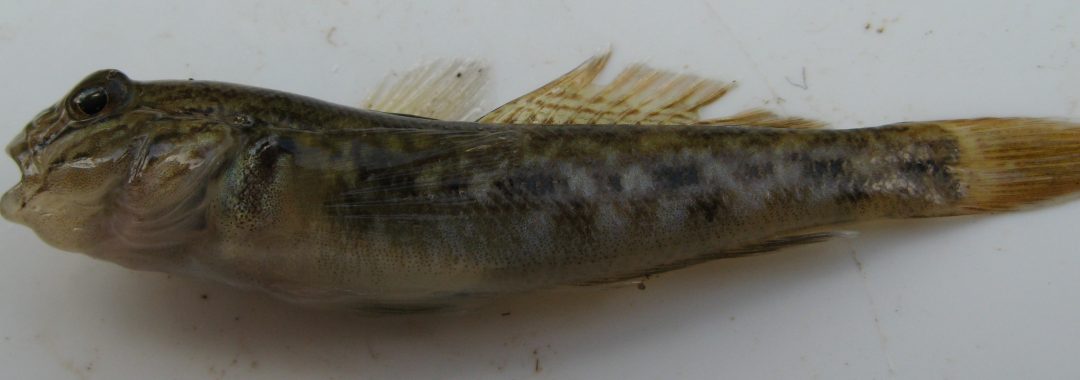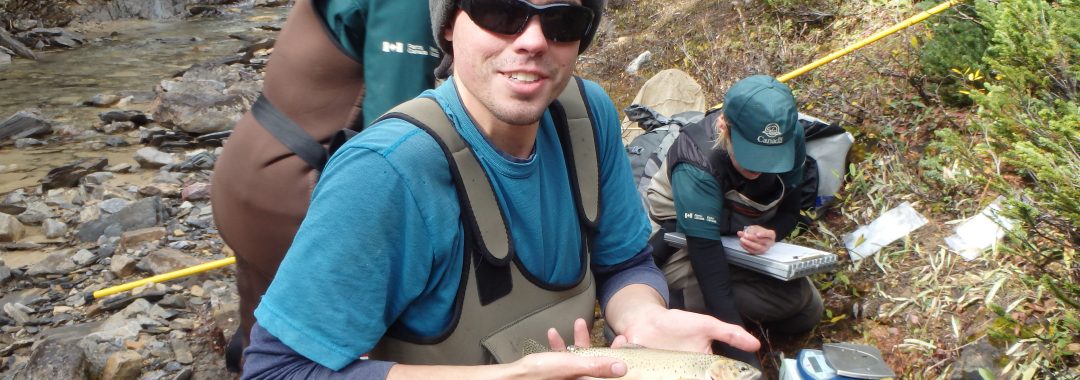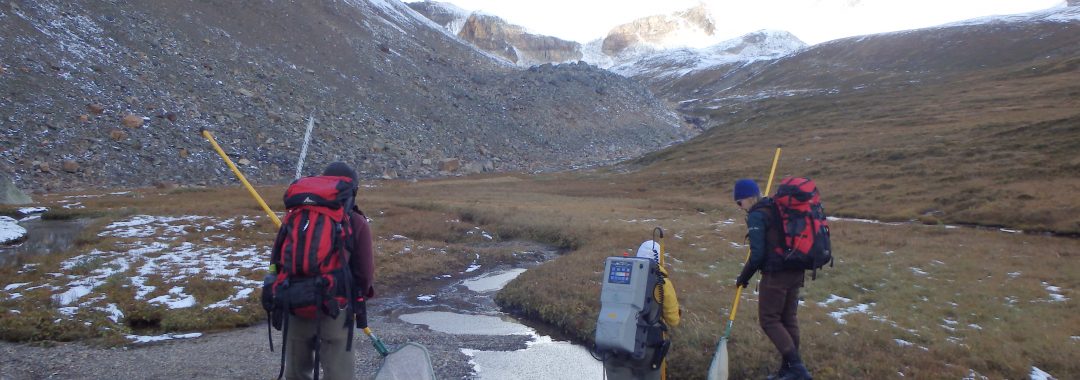Archived Content.
Category Archives: Species at Risk
There has been a dramatic decline in freshwater fish biodiversity globally, and this is true in Canada as well. Losses of freshwater fishes have important consequences to Canadians. Freshwater fish provide forage for other biota, drive ecosystem properties, and are indicators of aquatic ecosystem health. In the PoeschLab, we study the declines of freshwater fishes, including species like: Arctic Grayling, Athabasca Rainbow Trout (Endangered), Bull Trout (Special Concern), Carmine Shiner (Threatened), Lake Sturgeon (Saskatchewan River, COSEWIC: Endangered), Plains Sucker (Milk River Population – Threatened), Redside Dace (Endangered), Rocky Mountain Sculpin (Eastslope Population – Endangered), Western Silvery Minnow (Threatened), Westslope Cutthroat Trout (AB Population – Threatened), among many others.
Poesch, M.S., Dextrase, A.J., Schwalb, A.N., and J. Ackerman (2010) Secondary invasion of the round goby into high diversity Great Lakes tributaries and species at risk hotspots: Potential new concerns for endangered freshwater species. Biological Invasions 12: 1269-1284.
Abstract:
The round goby (Neogobius melanostomus) first invaded North America in 1990 when it was discovered in the St. Clair River. Despite more than 15 years of potential invasion, many Great Lakes’ lotic systems remained uninvaded. Recently, we captured the round goby from several Great Lakes tributaries known as species-at-risk hotspots. With a combination of field sampling of round gobies and literature review of the impact of round gobies on native taxa, we assess the potential impacts of the secondary invasion to native species using three mechanisms: competition; predation; and indirect impacts from the loss of obligate mussel hosts. We estimate that 89% (17/19) of benthic fishes and 17% (6/36) of mussels that occur in these systems are either known or suspected to be impacted by the secondary invasion of round goby. In particular, we note that the distribution of potential impacts of round goby invasion was largely associated with species with a conservation designation, including seven endangered species (1 fish, 6 mussels). As these recent captures of round goby represent novel occurrences in high diversity watersheds, understanding the potential impacts of secondary invasion to native biota is fundamental to prevent species declines and to allow early mitigation.
Featured In: Fisheries 34(9): 421 (Link), & several media outlets.
Citation: Poesch, M.S., Dextrase, A.J., Schwalb, A.N., and Ackerman, J. 2010. Secondary invasion of the round goby into high diversity Great Lakes tributaries and species at risk hotspots: Potential new concerns for endangered freshwater species. Biological Invasions 12: 1269-1284.
Also Read:
Poesch, M.S., Mandrak, N.E., and R. L. McLaughlin (2008) A practical framework for selecting among single species, multi-species and ecosystem-based recovery plans. Canadian Journal for Fisheries & Aquatic Science 65: 2656-2666.
Abstract:
Science-based approaches for selecting among single-species, community-, and ecosystem-based recovery plans are needed to conserve imperilled species. Selection of recovery plans has often been based on past success rates with other taxa and systems or on economic cost, but less on the ecology of the system in question. We developed a framework for selecting a recovery plan based on the distributions and ecology of imperilled and nonimperilled species across available habitat types and applied it to fishes in the Sydenham River, Ontario, Canada. We first tested whether distributions of fishes were adequately predicted by habitat features hypothesized to limit the distributions of imperilled fishes versus a broader set of habitat features known to predict fish distributions. We then tested whether imperilled species occurred in similar or disparate habitat types. For the Sydenham River, an ecosystem-based recovery plan was deemed most appropriate because imperilled species occur in disparate habitat types. We lastly provide decision criteria to facilitate applications of our framework to the selection of recovery plans for other species and systems.
Citation: Poesch, M.S., Mandrak, N.E., and McLaughlin, R.L. 2008. A practical framework for selecting among single species, multi-species and ecosystem-based recovery plans. Canadian Journal for Fisheries & Aquatic Science 65: 2656-2666.
Also Read:
Poesch, M.S., Mandrak, N.E., and R. L. McLaughlin (2007) The effectiveness of two common sampling methods for sampling imperiled freshwater fishes. Journal of Fish Biology 70: 691-708.
Abstract:
This study tested the hypothesis that the most common gear type used to sample fishes in wadeable systems, electrofishing, was more effective than another commonly used gear type, seining, for sampling fish species at risk. Five predictions were tested. At sites where species at risk were detected, (1) the probability of detecting the species at risk, (2) the probability of only one gear type detecting the species at risk and (3) the estimated catch per unit effort of the species at risk, was as high as, or higher, when using electrofishing than when using a seine. (4) The number of sample sites required to detect a species at risk within a watershed and (5) the number of subsections required to detect a species at risk within a site, were as low as, or lower, using electrofishing than the number required using a seine. Based on analyses of these measurements, electrofishing was a more effective gear type than seining for sampling fish species at risk, irrespective of the unit (presence or absence or catch per unit effort) or scale of measurement (watershed or site level). Dissolved oxygen, turbidity, specific conductivity and nitrate concentrations were measured at each site and did not account for the between gear differences. Selection of sampling gear can be a fundamental consideration for the assessment of fish species at risk, where, unlike common species, they may be particularly influenced by small population sizes, restricted geographic ranges and narrow habitat preferences. Resource managers must weigh differences in the risks of injury of fish species at risk against differences in the effectiveness of each gear type when deciding between gear types and the utility of the assessments they represent.
Citation: Poesch, M.S., Mandrak, N.E., and McLaughlin, R.L. 2007. The effectiveness of two common sampling methods for sampling imperiled freshwater fishes. Journal of Fish Biology 70: 691-708.
Also Read:




